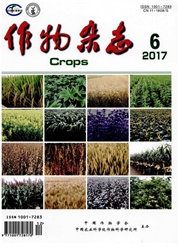

 中文摘要:
中文摘要:
以大田种植的高产杂交稻两优培九的上三片功能叶为对象,研究其自然衰老过程中的生理特性变化。结果表明,功能叶衰老过程中,叶绿素含量先上升后下降,且倒三叶的叶绿素含量的下降速度最快。Fo和Fv/Fm在不同叶位的功能叶之间没有明显差异。SOD、CAT活性在3片功能叶中都呈下降趋势,POD呈先上升后下降,且3种抗氧化酶都是在剑叶中活性最高。MDA和O2^-含量在3片功能叶中呈上升趋势,可溶性蛋白和糖含量随着衰老的进程而逐渐降低,且剑叶中的可溶性蛋白和可溶性糖含量均显著高于倒二叶和倒三叶。说明在两优培九衰老的早期,3片功能叶共同维持着水稻的光合产物向子粒中转运,而后期剑叶在进一步增加光合产物中起主要作用。
 英文摘要:
英文摘要:
To study the changes of physiological characteristics of functional leaves in rice, the experiment was conducted on the last three leaves of a high-yielding hybrid flee, i. e. "Liangyoupeijiu", grown in the field. The results showed that during senescence period of functional leaves, chlorophyll content increased at the beginning and then declined, and the chlorophyll content of the third leaf from top decreased the fastest among three functional leaves. There were no significant difference of Fo and Fv/Fm among different leaves. The activities of SOD and CAT in the three functional leaves were in a downward trend. POD increased first and then dropped, and the antioxidant enzymes had the highest activities in the flag leaf. MDA and O2^- content in the three functional leaves increased. The content of soluble protein and sugar in three functional leaves reduced gradually with the aging process, and soluble protein and sugar content in flag leaf was significantly higher than that of the two other leaves. The results indicated that the last three leaves played an important role in transiting photosynthesis products to rice grains at the early aging stage of "Liangyoupeijiu", and the flag leaves played a major role in further increasing photosynthetic products during the later aging process.
 同期刊论文项目
同期刊论文项目
 同项目期刊论文
同项目期刊论文
 期刊信息
期刊信息
